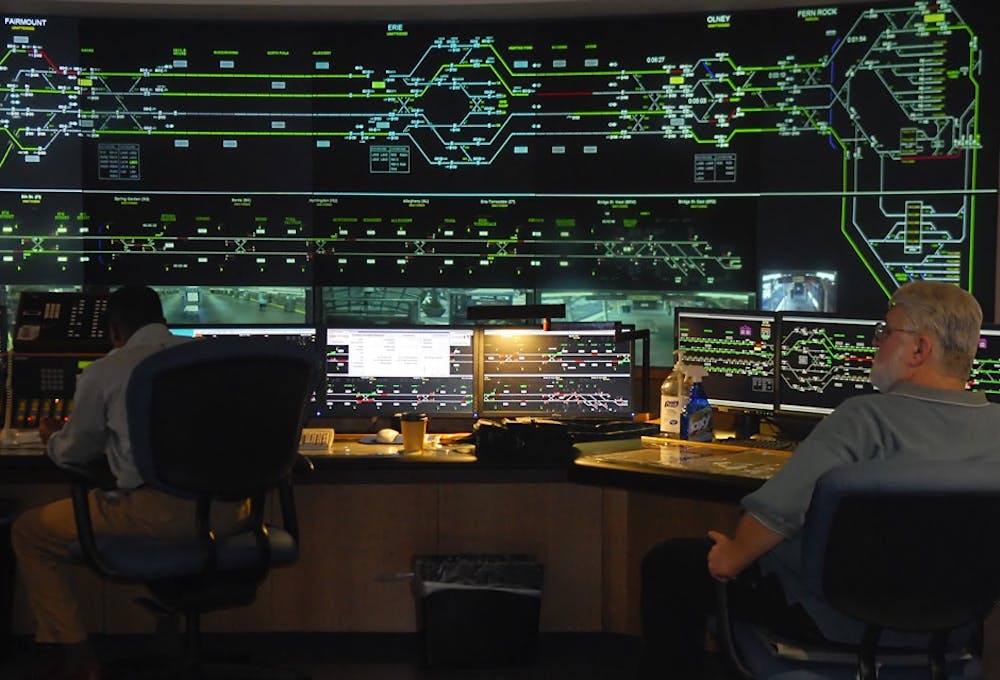
The first thing I notice upon entering the 19th floor of the SEPTA headquarters is the overwhelming darkness permeated by lights from large, colorful screens sprawling throughout the floor.
SEPTA’s control center, which houses the operations and safety departments for all modes of Southeastern Pennsylvania’s public transportation, is abuzz with activity on this particular Friday, in response to the massive rainstorms that flooded the Norristown High Speed Line.
Walkie talkies crackle and phones ring as employees answer questions between bites of doughnuts.
A group of people exit what SEPTA spokesman Andrew Busch calls “the war room” after a meeting that was convened to manage to floodwater. “We always use that room for major events like the snowstorm last year and the SEPTA strike,” Busch says. “It basically gives us a look of everything happening out there,” he adds as he points to the people bustling about in the room.
Of that group, Deputy Chief Officer of SEPTA’s Control Center Operations John Power greets us and begins to explain the floodwater’s impact on the Norristown line, which runs along the Schuylkill River.
“We have to wait for the water to peak and subside before we do anything,” Power explains. “Once the water goes down, we go in to assess any infrastructure damage, and then engineers [are sent] to fix it.”
National Weather Service reports are projected side by side on all screens displaying the Norristown line. According to Power, SEPTA uses NWS’s hydrology reports to estimate the “crest time” of the floodwaters in the Schuylkill River Valley to assess when to make repairs.
As we walk around the control center, it becomes apparent how much impact a single employee has over Philadelphia’s transportation network. For a train on the Broad Street Line to change direction, according to Power, one simply has to “throw a switch” for a Fern Rock-bound train to now head to the Pattison Station, recently renamed the “AT&T; Station” after the company donated a large sum to SEPTA.
One person staffs the trolleybus department of trackless trolleys in Northeast Philadelphia on Friday. With the push of a button, he is able to shut off electricity to all or part of the network of cables on which the trolleys are propelled.
Power stresses the influence of urban transportation systems on a city’s economy. “You could not have dense development in a city without having a major transportation hub delivering employees to a [company’s] doorstep,” he explains. “It’s not by accident that the Comcast building is near the Suburban station or the Empire State Building near Penn Station.”
We end the tour with a visit to SEPTA’s Customized Community Transportation (CCT) Connect department, which serves disabled and senior citizens unable to use other means of transportation. A low hum resonates throughout the unit, as employees answer calls from clients, repeating sentences several times over for the hearing impaired.
A loud belch from across the room momentarily silences the monotonous buzz, but the rhythm of voices soon resumes and everyone goes back to work again.
The Daily Pennsylvanian is an independent, student-run newspaper. Please consider making a donation to support the coverage that shapes the University. Your generosity ensures a future of strong journalism at Penn.
DonatePlease note All comments are eligible for publication in The Daily Pennsylvanian.







